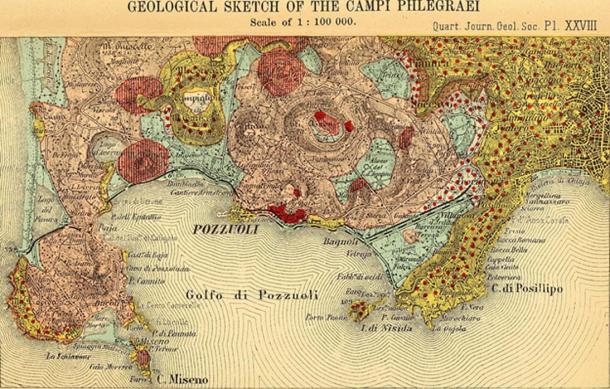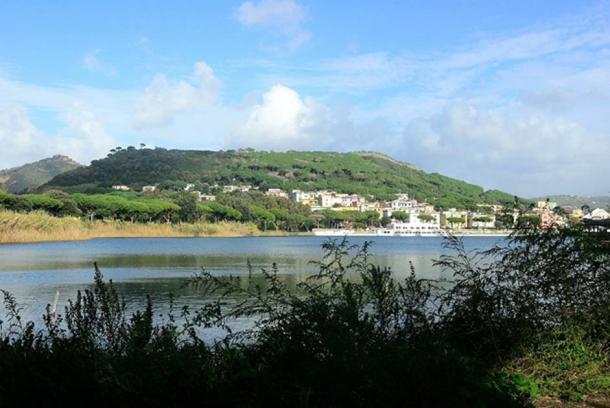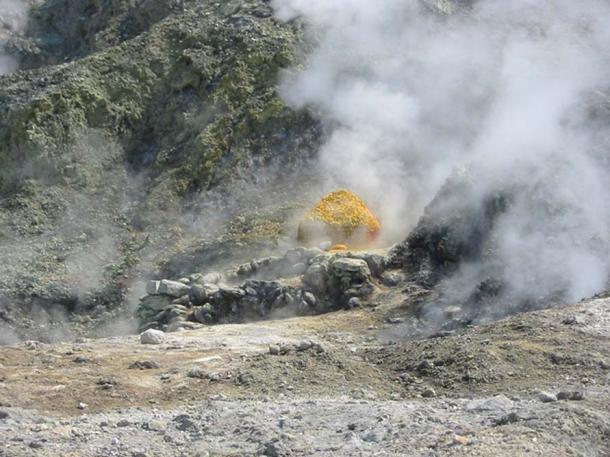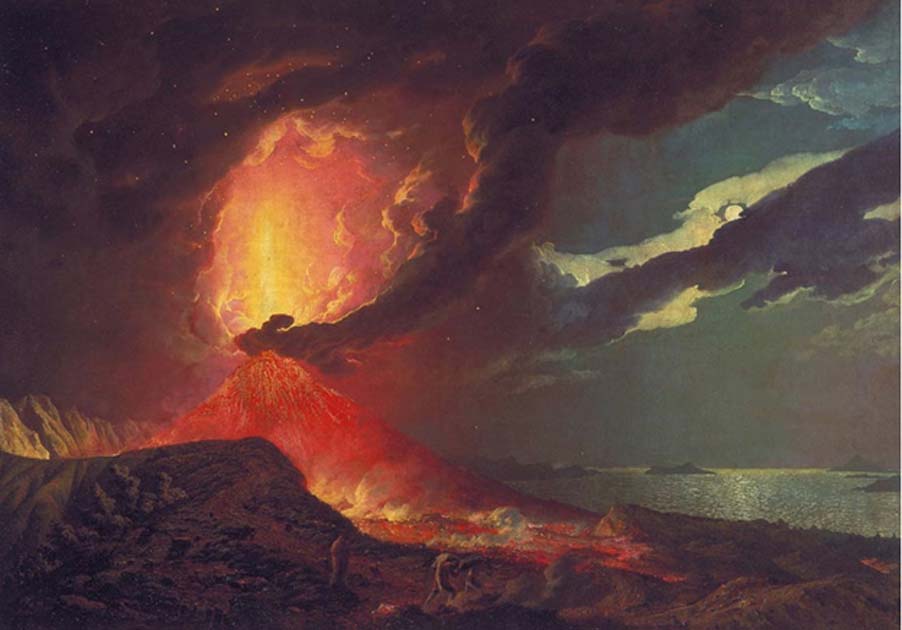Ancients - Supervolcano That May Have Wiped out Neanderthals Comes to Life Again
A huge area of volcanic activity near heavily populated Naples, Italy, is reaching a critical point and scientists think it could erupt. The 12-kilometer (7.46 miles) caldera or volcanic cauldron hasn’t erupted for nearly 500 years, but scientists say the seismic monster is reawakening. Some researchers speculate that when Campi Flegrei, which translates from Italian as Burning Fields, erupted about 39,000 years ago it may have wiped out the Neanderthals. Although there is no definitive evidence for this, the fact that the caldera has the potential to devastate a large region of Italy and could even cause volcanic winter worldwide is not in question.

An 1845 map of Campi Flegrei by the Quarterly Journal of the Geological Society of London. (Wikimedia Commons)
The caldera has 24 craters and some large volcanic edifices, most under the Mediterranean Sea. It formed 39,000 years ago during the most catastrophic volcanic explosion in Europe for 200,000 years, says Science Alert.
Scientists call these types of geological feature supervolcanos, which form large fields of volcanic eruptions and spew so much magma from below that they collapse and leave behind a big crater. The supervolcano landscape generates hydrothermal activity, geysers and sulfuric acid.
Campi Flegrei has had just three eruptions—two large ones 39,000 and 12,000 years ago. A “smaller” one in 1538 was so great that it lasted for eight days and put out such huge releases of lava that it formed Monte Nuovo, a new mountain.

Monte Nuovo was formed during an eruption of Campi Flegrei in 1538. (Wikimedia Commons photo/yiftah-s)
One eruption of Campi Flegrei was so huge that researchers speculate it killed off the Neanderthals. Modern Homo sapiens survived because they lived farther away from the volcanic activity, these researchers say.
While the connection of the demise of the Neanderthals remains purely speculative until further evidence can be found, the eruption, which is thought to have spewed almost 1 trillion gallons (3.7 trillion litres) of molten rock onto the surface - along and with just as much sulfur into the atmosphere - is not.
Another reason Homo sapiens may have outlived Neanderthals was because of a population vacuum of Neanderthals in Europe and a revolution in technological and social advancements that people came up with shortly after 40,000 years ago.

Sulfur in a burning landscape at Campi Flegrei near Naples, Italy (Wikipedia photo/Donar Reiskoffer)
Scientists can’t accurately predict when a volcano will blow, though they monitor volcanoes, especially near populated areas such as Naples with 500,000 people. Volcanic eruption predictions are an imprecise science.
But volcanologist Giovanni Chiodini of the Italian National Institute of Geophysics and his team are saying Campi Flegrei seems to be nearing the point of eruption and is in a state of critical degassing pressure. Their paper in the journal Nature Communications states:
We propose that magma could be approaching the CDP at Campi Flegrei, a volcano in the metropolitan area of Naples, one of the most densely inhabited areas in the world, and where accelerating deformation and heating are currently being observed.
The CDP at Campi Flegrei could result in release of jets of super-hot gases into the atmosphere and could heat rocks and hydrothermal fluids that could cause rock failure and even an eruption.
This phenomenon has been observed at two other active volcanoes, one in Papua New Guinea and one in the Galapagos Islands. “Both showed acceleration in ground deformation before eruption with a pattern similar to that observed at Campi Flegrei,” Chiodini told The Guardian.
There are many uncertainties about this possible volcanic activity, Chiodini told The Washington Post. Campi Flegrei may evolve in both directions, toward conditions of pre-eruption or even to the demise of any volcanic unrest.

No comments:
Post a Comment